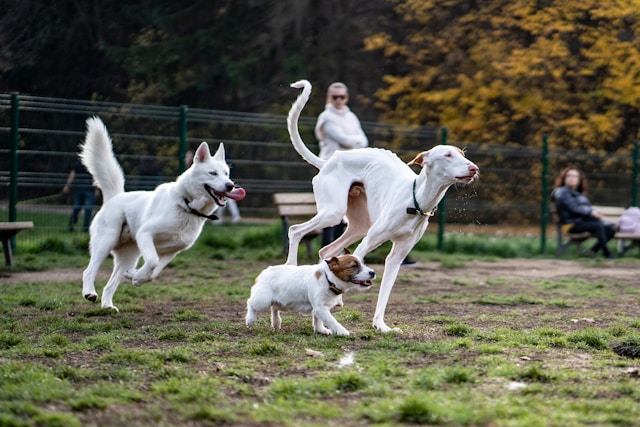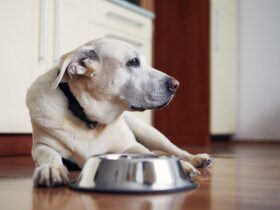As dogs age, they may develop cataracts, a common condition that impairs vision by causing the lens of the eye to become cloudy. Cataracts can significantly affect your dog’s quality of life, making it challenging for them to navigate their environment. Understanding how to manage and counteract cataracts is crucial in helping your aging dog maintain optimal eyesight. This guide provides detailed insights into preventing cataracts, recognizing their symptoms, and exploring treatment options to support your dog’s vision.
Understanding Cataracts in Dogs
What Are Cataracts? Cataracts occur when the lens of the eye becomes opaque, blocking light from reaching the retina. This condition can lead to partial or complete loss of vision. Cataracts can develop due to various factors, including genetics, aging, diabetes, or eye injuries.
How Cataracts Affect Vision The primary effect of cataracts is reduced vision clarity. As the cataract progresses, it can lead to complete blindness. Early detection and management are key to preventing severe vision loss and maintaining your dog’s quality of life.
Signs and Symptoms of Cataracts
Recognizing cataracts early can help in managing the condition effectively. Common signs include:
- Cloudy or Milky Eyes
- Appearance: The most noticeable sign is a cloudy or milky appearance in the eyes, often visible in the lens.
- Changes in Behavior
- Disorientation: Your dog may appear disoriented or bump into objects they previously navigated easily.
- Hesitation: Increased hesitation or reluctance to move around, especially in unfamiliar areas.
- Difficulty Navigating
- Problems with Vision: Difficulty finding food, water, or familiar resting spots. Your dog may struggle to navigate stairs or other obstacles.
- Increased Sensitivity to Light
- Light Sensitivity: Your dog might squint or avoid bright light due to discomfort.
- Behavioral Changes
- Altered Interaction: Changes in how your dog interacts with people or other pets, potentially becoming more withdrawn or anxious.
Diagnosing Cataracts
If you suspect your dog has cataracts, a veterinary examination is essential. The diagnostic process typically includes:
- Veterinary Eye Examination
- Physical Exam: Your vet will perform a thorough eye examination to assess the lens’s condition and overall eye health.
- Diagnostic Testing
- Ocular Ultrasound: In some cases, an ocular ultrasound may be used to evaluate the lens and retina in more detail.
- Blood Tests
- Underlying Conditions: Blood tests may be conducted to rule out underlying conditions such as diabetes, which can contribute to cataract formation.
Preventing Cataracts
While not all cataracts can be prevented, certain measures can reduce the risk or slow the progression:
- Regular Veterinary Check-Ups
- Routine Eye Exams: Regular veterinary check-ups can help detect early signs of cataracts and other eye conditions before they become severe.
- Manage Underlying Health Conditions
- Diabetes Management: Proper management of diabetes and other health conditions can help prevent cataract development or progression.
- Antioxidant-Rich Diet
- Healthy Nutrition: Feed your dog a balanced diet rich in antioxidants, which may help reduce oxidative stress and support overall eye health. Look for foods containing vitamins A, C, and E.
- Protect from UV Light
- Limit Sun Exposure: Avoid prolonged exposure to direct sunlight, which can contribute to eye damage over time. Ensure your dog has access to shaded areas.
- Avoid Eye Injuries
- Protective Measures: Take precautions to prevent eye injuries, such as using protective gear during playtime or avoiding rough play that could lead to eye trauma.
Treatment Options for Cataracts
If your dog develops cataracts, various treatment options can help manage the condition and improve vision:
- Medical Management
- Eye Drops and Medications: While there are no medications to cure cataracts, your vet may prescribe eye drops or medications to manage symptoms or treat underlying conditions.
- Surgical Intervention
- Cataract Surgery: The most effective treatment for cataracts is surgical removal of the cloudy lens. This procedure involves replacing the lens with an artificial one, restoring vision in many cases.
- Post-Surgery Care: After surgery, follow your vet’s instructions for post-operative care, including administering prescribed medications and preventing your dog from rubbing or scratching their eyes.
- Vision Aids
- Assistive Devices: Use vision aids such as harnesses or guides to help your dog navigate their environment if surgery is not an option or until vision is fully restored.
Adjusting Your Home for a Dog with Cataracts
Making your home environment more accommodating can help your dog adjust to vision changes:
- Create a Safe Space
- Hazard-Free Environment: Remove or secure obstacles and hazards that could cause your dog to trip or bump into objects.
- Consistent Layout: Keep furniture and items in consistent locations to help your dog become familiar with their surroundings.
- Use Bright, Consistent Lighting
- Well-Lit Areas: Ensure that key areas, such as food and water stations, are well-lit and easy to find.
- Night Lights: Consider using night lights to help your dog navigate in the dark.
- Enhance Navigation Aids
- Ramps and Non-Slip Mats: Install ramps for easy access to furniture or beds and use non-slip mats to prevent slipping on smooth surfaces.
- Engage in Gentle Exercise
- Routine Walks: Continue to provide regular, gentle exercise to help your dog stay active and maintain muscle strength. Use a leash or harness for added control and safety.
Supporting Your Dog Emotionally
Cataracts and vision loss can be stressful for your dog. Providing emotional support and maintaining a positive environment is essential:
- Maintain a Routine
- Consistent Schedule: Stick to a regular routine for feeding, exercise, and playtime to provide a sense of stability and security.
- Offer Reassurance
- Positive Interaction: Spend quality time with your dog, offering affection and reassurance to help them feel secure despite vision changes.
- Training and Enrichment
- Mental Stimulation: Engage your dog with interactive toys and gentle training exercises to keep their mind active and reduce anxiety.
Conclusion
Cataracts are a common issue for aging dogs, but with timely diagnosis, appropriate treatment, and thoughtful home modifications, you can help maintain your dog’s quality of life and support their vision. Regular veterinary check-ups, a healthy diet, and protective measures can contribute to preventing cataracts or slowing their progression.
By taking proactive steps and providing a supportive environment, you ensure that your senior dog can navigate their world with confidence and comfort, making their golden years as enjoyable as possible.










Leave a Reply